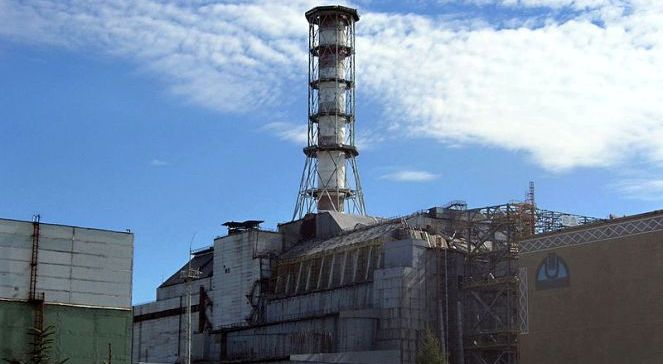The failure of reactor number 4 at Chernobyl, which occurred 30 years ago (26 April 1986). Radioactively tainted a large part of the northern hemisphere. And while in most places the radiation level has not changed significantly, in the vicinity of the plant itself is still sometimes strongly increased. That such places are of interest to evolutionary biologists.
The enormous scale
– This is an interesting place because it allows you to study mutations occurring in organisms living in the vast space, calculated in thousands of square kilometers. We see there the populations of birds, mammals, invertebrates, plants and bacteria we are studying. In most of these groups of organisms we are found clear evidence for the presence of organisms response to radiation doses. We can also see that organisms react worse in areas with a higher level of radiation – says biologist working around Chernobyl since 1991. Anders Pape Møller of the Université Paris-Sud XI, France.
– Research response of organisms to radiation on such a scale that they offer around Chernobyl is not possible in any laboratory – adds Tim Mousseau from the University of South Carolina, which explores a restricted zone with Møller since 2000.

Chernobyl is still a threat? There is a lack of money to secure the reactor
Within the “wife” evolutionists are interested in the impact of radiation on various organs, mechanisms and processes: the survival and reproduction of the birds, the sex ratio in the population, the size of brains in birds and voles, the incidence of tumors, interactions between insects zapylającymi, plants, fruits owocożernymi and animals, and even symmetry spider webs. Examine the effects of radiation on the viability of pollen for seed germination, plant growth and wood decay processes.
Adapting to stress radiation
Mousseau and Møller verify whether the animals have adapted to high levels of radiation and whether they can deal with it. – When we started the study, from the moment of the disaster scrolled already many generations of birds and insects. This means that evolution had a lot of time to develop possible reaction to higher radiation. Our first question was whether the animals can adapt to the stress of radiation – reports Mousseau.
As explained in the eggs of birds and insects present are chemical compounds useful, for example. During combat bacterial infections (such as antibiotics). The structure of the eggs are built also antioxidants that may help protect against radiation. – We believe that this kind of response from the mother could evolve in the Chernobyl populations, the animals fared better with an increased radiation – says Mousseau.

nuclear Energy: necessary evil or an opportunity for the future?
Møller and Mousseau report that they have found abundant evidence to damage the genetic material of organisms (eg. A change in DNA), which may lead to the formation of tumors, slowdown or other irregularities. – Knowing that people exposed to radiation often later adopted by cataracts – we started this angle look at the birds and mice. We found that, in response to radiation also occurs in them a cataract. While male mice and birds, particularly those living on more radioactive areas have a reduced fertility. Produce less semen, or do not produce it at all, changes can preserve their sperm, making worse they perform their role – says Mousseau.
A paradise for animals?
At the end of 2014. Media news said that in the restricted zone of Chernobyl thriving wild life and abandoned by people woods are full of wild boar, deer, wolves, elk, and foxes. According to biologists, the amount does not necessarily indicate that the irradiated area in a special way is the animals. The only thing you can say with certainty – is that the population is increasing due to lack of hunting. – You can not say, however, how is this increase in the number of animals to the Chernobyl radiation levels – indicates Mousseau.
– Yes, there are large mammals; but is more than you would expect? Large mammals arrived in many places in Europe, including in Poland. Is the increase in their numbers in the Chernobyl is correspondingly larger than those found elsewhere? Past observations do not allow to say whether wolves or other large animals, living in more polluted surroundings, do not accumulate more mutations. Our results clearly indicate that the animal is more in those places where the radiation is weaker. The most contaminated sites animals clearly avoid – says Møller.
Different sources of contamination
Speaking about the importance of testing the effects of radiation Tim Mousseau suggested that in the future, and there is a “likelihood of accidents and even nuclear terrorism.” – Taking this into account – it is very important that scientists learned as much about. Impact associated with this pollution on the environment; both in terms of combating the effects of potential accidents and risk assessment based on evidence, as well as energy policy – he said.
Source: RUPTLY / x-news
He added that radioactive contamination come not only from historical accidents, but for the whole cycle of uranium, from its extraction, the storage of spent fuel. – Such impurities means the environmental consequences identified, but have not been studied in detail – he stressed.
– It does not matter whether we are supporters or opponents of nuclear power – it already exists, and will remain with us for years. Throughout the world today, more than 400 nuclear reactors, built 65 new planned a further 165. In my area the United States there are four new reactors, which almost see through the window. Regardless of what we think about them – we need to know more, so we were prepared for any contamination that come with this type of technology – just like other pollutants, binding with other types of energy production technologies – he stressed.
PAP / fc
No comments:
Post a Comment